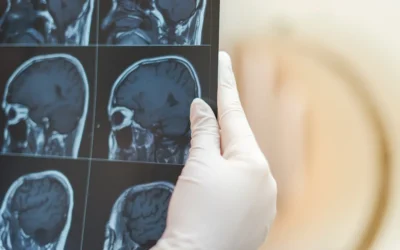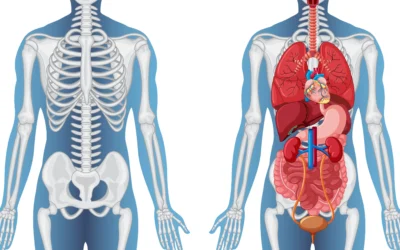The kidneys, vital organs responsible for filtering waste and maintaining fluid balance, are often overlooked until problems arise. An atrophied kidney, characterized by a significant reduction in size and function, is more than just a physical anomaly; it can be a critical indicator of underlying health issues. From chronic conditions like hypertension to congenital abnormalities, an atrophied kidney often signals a broader medical challenge. Early detection and proactive management are essential to prevent further complications and preserve overall health.
Understanding Kidney Atrophy
An atrophied kidney refers to the shrinkage of one or both kidneys, resulting from the loss of nephrons—the microscopic structures that filter blood. A healthy adult kidney typically measures about 10-12 cm in length. When a kidney falls below this range, it may indicate atrophy, which compromises its ability to function effectively.
Several factors can lead to kidney atrophy:
Chronic Kidney Disease (CKD): Progressive damage over time diminishes kidney size and function. CKD affects approximately 15% of adults in the United States, making it a significant contributor to kidney atrophy. This condition often develops slowly over years, silently damaging kidney tissue and reducing its overall size.
Obstructive Uropathy: Blockages in the urinary tract, such as kidney stones or tumors, can impair kidney function and cause shrinkage. These obstructions can lead to a buildup of pressure within the kidney, damaging its delicate structures and potentially causing irreversible atrophy if left untreated.
Vascular Issues: Reduced blood flow due to conditions like renal artery stenosis can starve the kidney of oxygen and nutrients. This restriction in blood supply can lead to gradual atrophy over time, as the kidney tissue struggles to maintain its normal functions without adequate nourishment.
Congenital Abnormalities: Some individuals are born with smaller kidneys due to developmental issues. These congenital anomalies may predispose a person to kidney atrophy later in life, as the kidneys may be more susceptible to damage or have reduced functional capacity from the start.
Infections and Inflammation: Recurrent urinary tract infections (UTIs) or pyelonephritis can lead to scarring and atrophy. Chronic inflammation can damage kidney tissue, leading to a reduction in size and function over time. Repeated infections can cause cumulative damage, gradually diminishing kidney size and capabilities.
Symptoms and Diagnosis
Recognizing the signs of an atrophied kidney is crucial for early intervention. Symptoms can vary, ranging from mild discomfort to severe health complications. Common signs include:
- Flank pain or discomfort, which may be intermittent or persistent
- Reduced urine output or changes in urination patterns, such as increased frequency or urgency
- Swelling in the legs or ankles (edema), often more noticeable at the end of the day
- Fatigue and unexplained weight loss, which can be signs of the body’s struggle to maintain normal functions
- High blood pressure, as the kidneys play a crucial role in regulating blood pressure
It’s important to note that these symptoms may not always be present, especially in the early stages of kidney atrophy. Regular check-ups and screenings are essential for early detection, particularly for individuals with risk factors such as diabetes or hypertension.
Accurate diagnosis typically involves a combination of:
Imaging Studies: Ultrasound, CT scans, or MRI to measure kidney size and detect structural abnormalities. These imaging techniques can provide detailed information about the kidney’s size, shape, and any potential obstructions. They are crucial in differentiating between atrophy and other kidney conditions.
Blood Tests: Assess kidney function by measuring creatinine and estimated glomerular filtration rate (eGFR). These tests help determine how well the kidneys are filtering waste from the blood and can track changes in kidney function over time.
Urinalysis: Identifies proteinuria, hematuria, or other abnormalities. The presence of protein or blood in the urine can indicate kidney damage or disease, providing valuable insights into the underlying causes of atrophy.
The Health Implications of Kidney Atrophy
An atrophied kidney often signals broader systemic issues. Left untreated, it can lead to complications such as:
Chronic Kidney Disease (CKD): Progressive kidney damage may result in end-stage renal disease (ESRD). CKD affects multiple organ systems and can significantly impact a person’s quality of life, requiring ongoing medical management and potentially dialysis or transplantation.
Hypertension: Impaired kidney function can disrupt blood pressure regulation. The kidneys play a crucial role in maintaining blood pressure, and their dysfunction can lead to persistent hypertension, which in turn can further damage the kidneys, creating a vicious cycle.
Cardiovascular Risk: CKD is a significant risk factor for heart disease. Studies have shown that individuals with kidney disease have a 2-3 times higher risk of cardiovascular events compared to those with normal kidney function. This increased risk underscores the importance of comprehensive care for patients with atrophied kidneys.
Living with an atrophied kidney can also affect mental health, causing anxiety and stress about long-term health prospects. The psychological impact of chronic kidney disease should not be underestimated, as it can significantly affect a person’s overall well-being and quality of life. Support groups and counseling can be valuable resources for individuals coping with the emotional aspects of kidney atrophy.
Treatment and Management Options
The management of an atrophied kidney focuses on preserving remaining function and addressing underlying causes. Treatment options include:
Medical Interventions:
- Medications such as ACE inhibitors or ARBs to manage blood pressure and slow kidney damage
- Surgical procedures to address underlying causes, such as removing obstructions or repairing vascular issues
Lifestyle Modifications:
- A low-sodium, kidney-friendly diet can reduce strain on the kidneys and help manage associated conditions like hypertension
- Adequate fluid intake supports kidney function, but the appropriate amount may vary depending on the individual’s condition
- Regular monitoring through routine check-ups to track kidney health and adjust treatments as needed
In advanced cases where kidney function is severely compromised, dialysis or kidney transplantation may be necessary. These interventions can be life-saving for individuals with end-stage renal disease, providing a way to maintain quality of life when the kidneys can no longer function adequately on their own.
Preventing Kidney Atrophy
Proactive health measures play a crucial role in preventing kidney atrophy:
Regular Screenings: Especially important for individuals with risk factors like diabetes or hypertension. Early detection can lead to more effective interventions and better outcomes, potentially slowing or halting the progression of kidney atrophy.
Managing Chronic Conditions: Effective control of diabetes, high blood pressure, and other chronic diseases can significantly reduce the risk of kidney damage. This may involve medication, lifestyle changes, and regular monitoring to ensure that these conditions are well-managed.
Avoiding Nephrotoxic Substances: Limiting exposure to medications or substances that can harm the kidneys is essential for long-term kidney health. This includes being cautious with over-the-counter pain medications and discussing potential kidney effects with healthcare providers when starting new medications.
Emerging technologies, such as artificial intelligence in imaging and novel biomarkers, are improving early detection and personalized treatment approaches for kidney diseases. These advancements hold promise for more accurate diagnoses and tailored treatment strategies in the future, potentially revolutionizing the way we approach kidney health.
Conclusion
An atrophied kidney is more than a medical condition; it is a warning signal of potential systemic health issues. Early detection and intervention are crucial to managing this condition effectively and preventing further complications. By understanding the causes, recognizing the symptoms, and pursuing appropriate treatment, individuals can take proactive steps to safeguard their kidney health and overall well-being.
As research continues to advance our understanding of kidney atrophy and its implications, it’s clear that a multidisciplinary approach involving nephrologists, urologists, and primary care physicians is essential for comprehensive care. By staying informed and proactive about kidney health, individuals can significantly improve their long-term health outcomes and quality of life.
References
- National Kidney Foundation. (2023). Chronic Kidney Disease Basics. www.kidney.org
- Centers for Disease Control and Prevention. (2023). Chronic Kidney Disease in the United States, 2021. www.cdc.gov
- American Heart Association. (2022). Cardiovascular Disease and Chronic Kidney Disease. www.heart.org
- American Journal of Kidney Diseases. (2022). Advances in Imaging for Kidney Disease.
- Mayo Clinic. (2023). Kidney Atrophy: Symptoms and Causes. www.mayoclinic.org





0 Comments